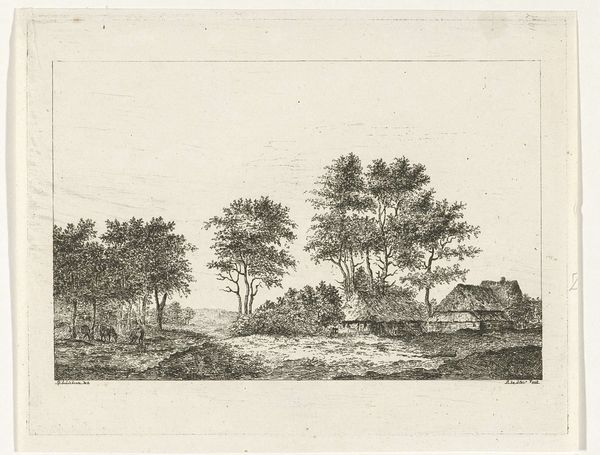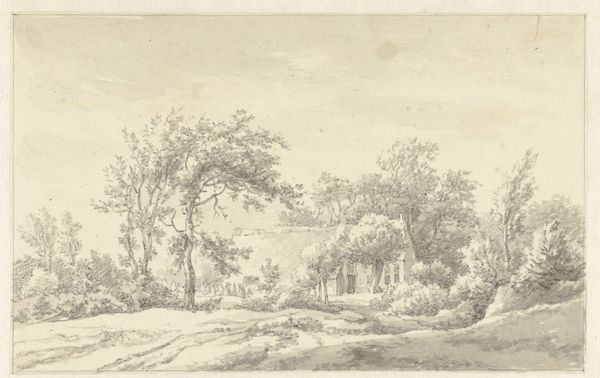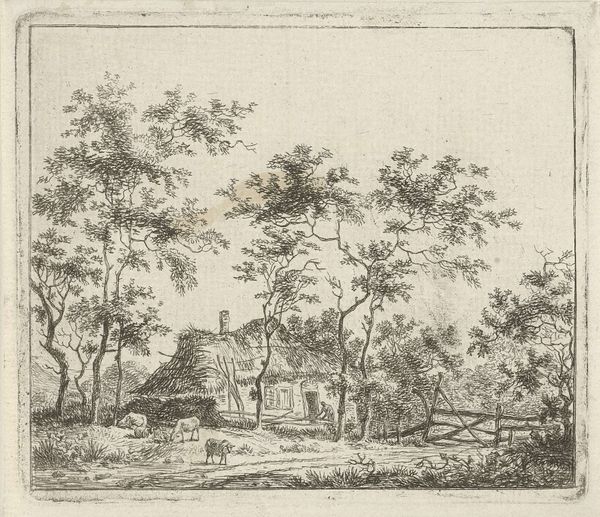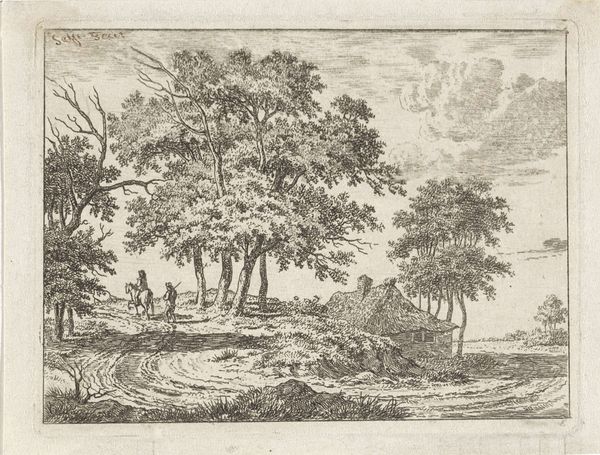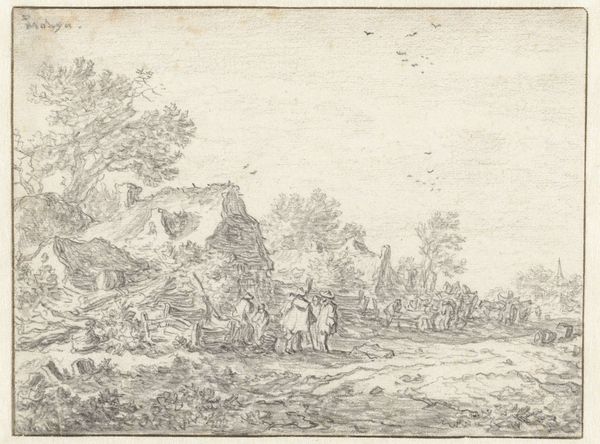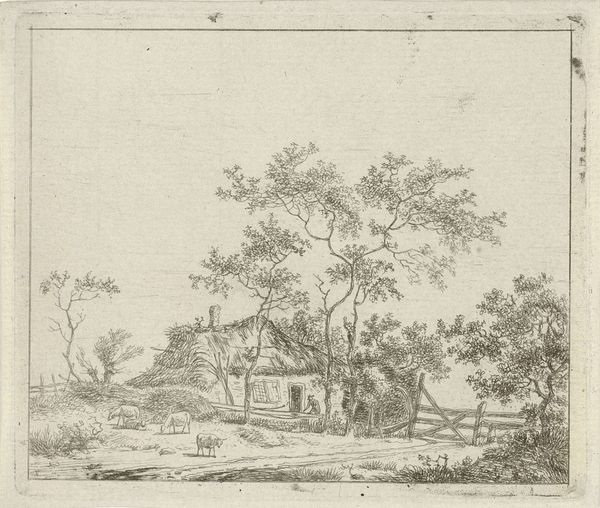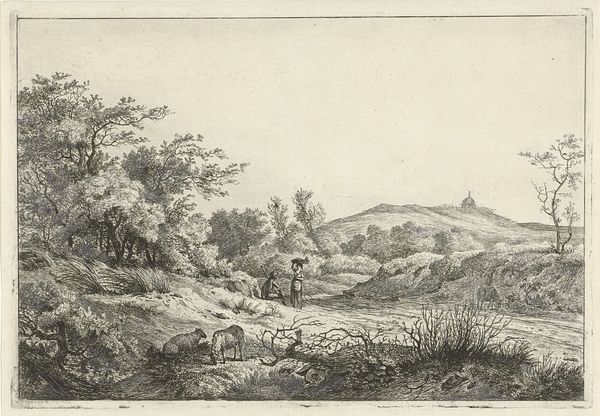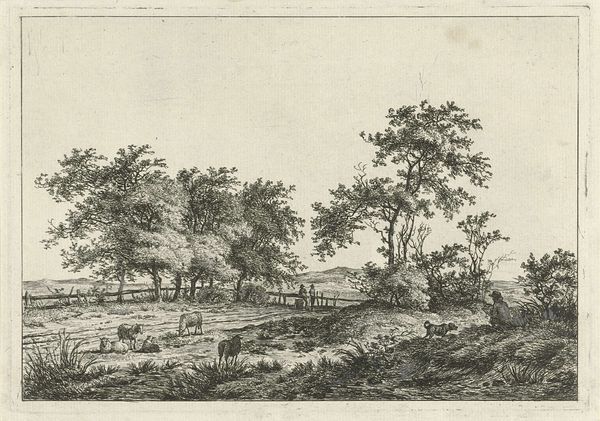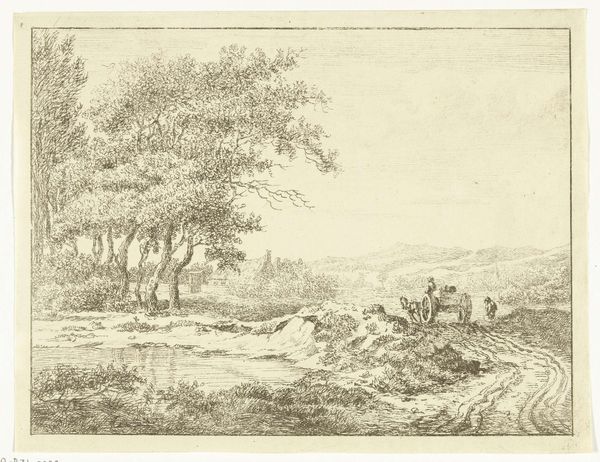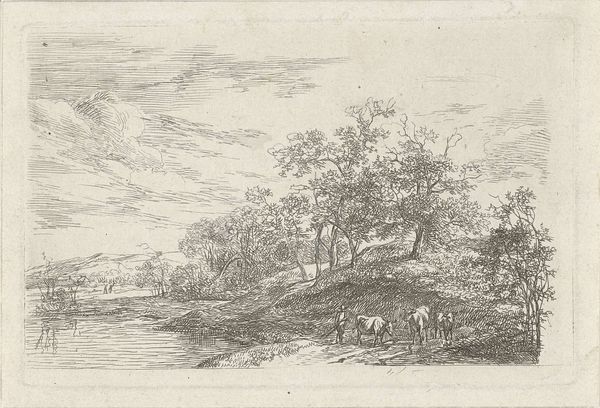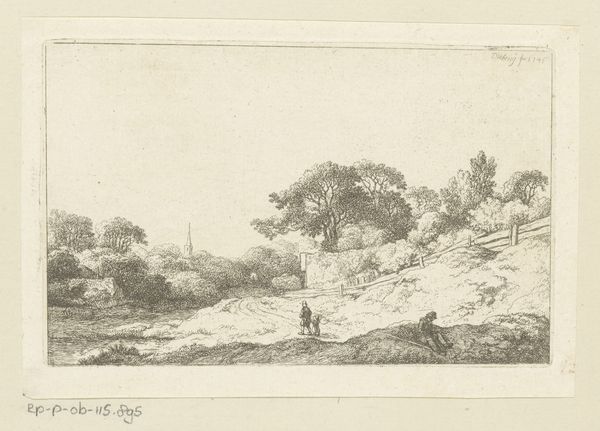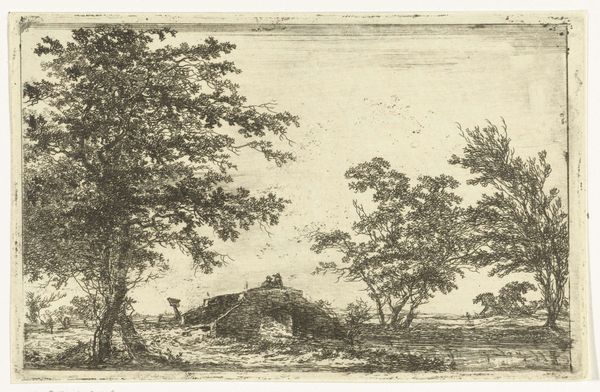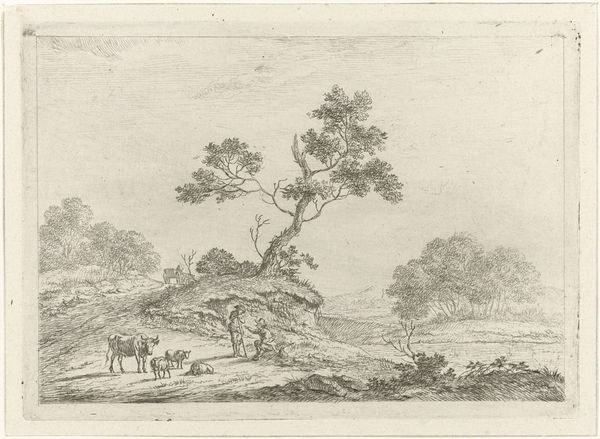
print, engraving
#
neoclacissism
# print
#
landscape
#
genre-painting
#
engraving
Dimensions: height 168 mm, width 245 mm
Copyright: Rijks Museum: Open Domain
Curator: This is "Landschap met ruiter en voetganger," or "Landscape with Rider and Pedestrian," an engraving by Hermanus Fock, likely created between 1781 and 1822. It's part of the Rijksmuseum collection. Editor: It has an immediate feel of open space. The engraving work itself, the density of the lines, creates an almost hazy atmosphere, and the small figures emphasize the grandeur of the landscape, no? Curator: Yes, precisely. Fock’s composition invites the viewer into a scene that echoes the ideals of Neoclassicism. There's a sense of order and a somewhat idealized view of nature. It speaks to the social context of the late 18th century where the aristocracy favored imagery portraying the beauty of their land holdings and leisure. Editor: And it’s all meticulously reproduced through the craft of engraving. Think of the labor involved! The process of creating those fine lines with a burin. What paper would have been chosen for the print to best catch those marks? How was this image circulated, consumed? Were these luxury objects or something with wider distribution? Curator: Interesting questions. Engravings like these certainly had a public role. They were circulated to disseminate images and ideas. Consider the political implications: By representing a peaceful, prosperous landscape, Fock potentially reinforces the status quo. It is the public art for the landowners. Editor: Absolutely, and it underscores the power dynamics inherent in landscape representation. The way these images were produced, and the material conditions surrounding their creation, directly influenced how these idyllic visions were seen. And the distribution as printed matter further reinforces the capitalist aspect. Curator: A compelling insight. Reflecting on this landscape, it serves as a window into a particular historical perspective on nature and society, reflecting both artistic conventions and underlying socio-political messages of the time. Editor: Agreed, by investigating its materiality, the very substance of its making, we confront the reality behind idealized representations.
Comments
No comments
Be the first to comment and join the conversation on the ultimate creative platform.

